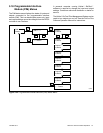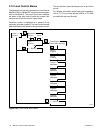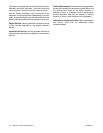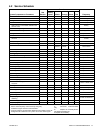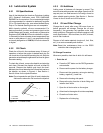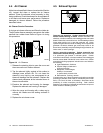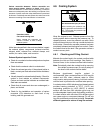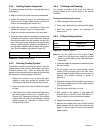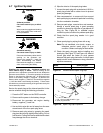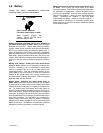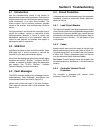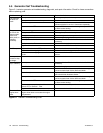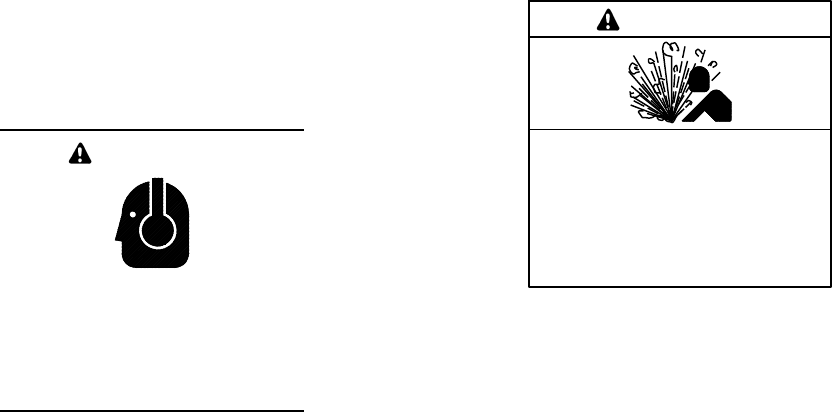
TP-6905 6/14 55Section 4 Scheduled Maintenance
Carbon monoxide detectors. Carbon monoxide can
cause severe nausea, fainting, or death. Install carbon
monoxide detectors on each level of the building. Locate the
detectors to adequately warn the building’s occupants of the
presence of carbon monoxide. Keep the detectors operational
at all times. Periodically test and replace thecarbon monoxide
detectors according to the manufacturer’s instructions.
Hazardous noise.
Can cause hearing loss.
Never operate the generator set
without a muffler or with a faulty
exhaust system.
CAUTION
At the interval specified in the service schedule, inspect
the exhaust system components (exhaust manifold,
exhaust outlet, exhaust line, exhaust clamps, and
muffler) for cracks, leaks, and corrosion.
Exhaust System Inspection Points
D Check forcorrodedor brokenmetalparts andreplace
them as needed.
D Check that the exhaust outlet is unobstructed.
D Check the exhaust gas color. If the exhaust is blue or
black, contact your local authorized Kohler distributor/
dealer.
D Visuallyinspectfor exhaustleaks(blowby). Checkfor
carbon or soot residue on exhaust components.
Carbon and soot residue indicates an exhaust leak.
Seal leaks as needed.
D Check that all covers and doors are undamaged, in
place, and locked.
D Check for the installation and operation of carbon
monoxide (CO) detectors on each level of any
building near the generator set.
4.6 Cooling System
Hot coolant and steam.
Can cause severe injury or death.
Before removing the pressure cap,
stop the generator set and allow it to
cool. Then loosen the pressure cap
to relieve pressure.
WARNING
Allow the engine to cool. Release pressure from the
cooling system before removing the pressure cap. To
release pressure, cover the pressure cap with a thick
cloth and then slowly turn the cap counterclockwise to
the first stop. Remove the cap after pressure has been
completely released and the engine hascooled. Check
the coolant level at the tank if the generator set has a
coolant recovery tank.
4.6.1 Checking and Filling Coolant
Maintain the coolant level in the coolant overflow bottle
between the Hot and Cold markings. See Section 1,
Service Views, for the coolant overflow bottle location.
Note: Periodically check the coolant level by removing
the radiator’s pressure cap. Do not rely solely on
the level in the coolant overflow bottle.
Ethylene glycol-based long-life coolant is
recommended. Use a coolant mixture of 50% long-life
coolant and 50% clean, softened water to inhibit
rust/corrosion and prevent freezing. Add fresh coolant
until the level is just below the overflow tube opening.
Acoolantsolution of 50%ethylene glycol-basedcoolant
provides freezing protection to --37 C(--34F) and
overheating protection to 149C (300F). A coolant
solution with less than 50% ethylene glycol may not
provide adequate freezing and overheating protection.
A coolant solution with more than 50% ethylene glycol
can cause engine or component damage. Do not mix
long-lifecoolant and conventionalcoolants. Do notmix
different types and/or colors of long life coolants.



